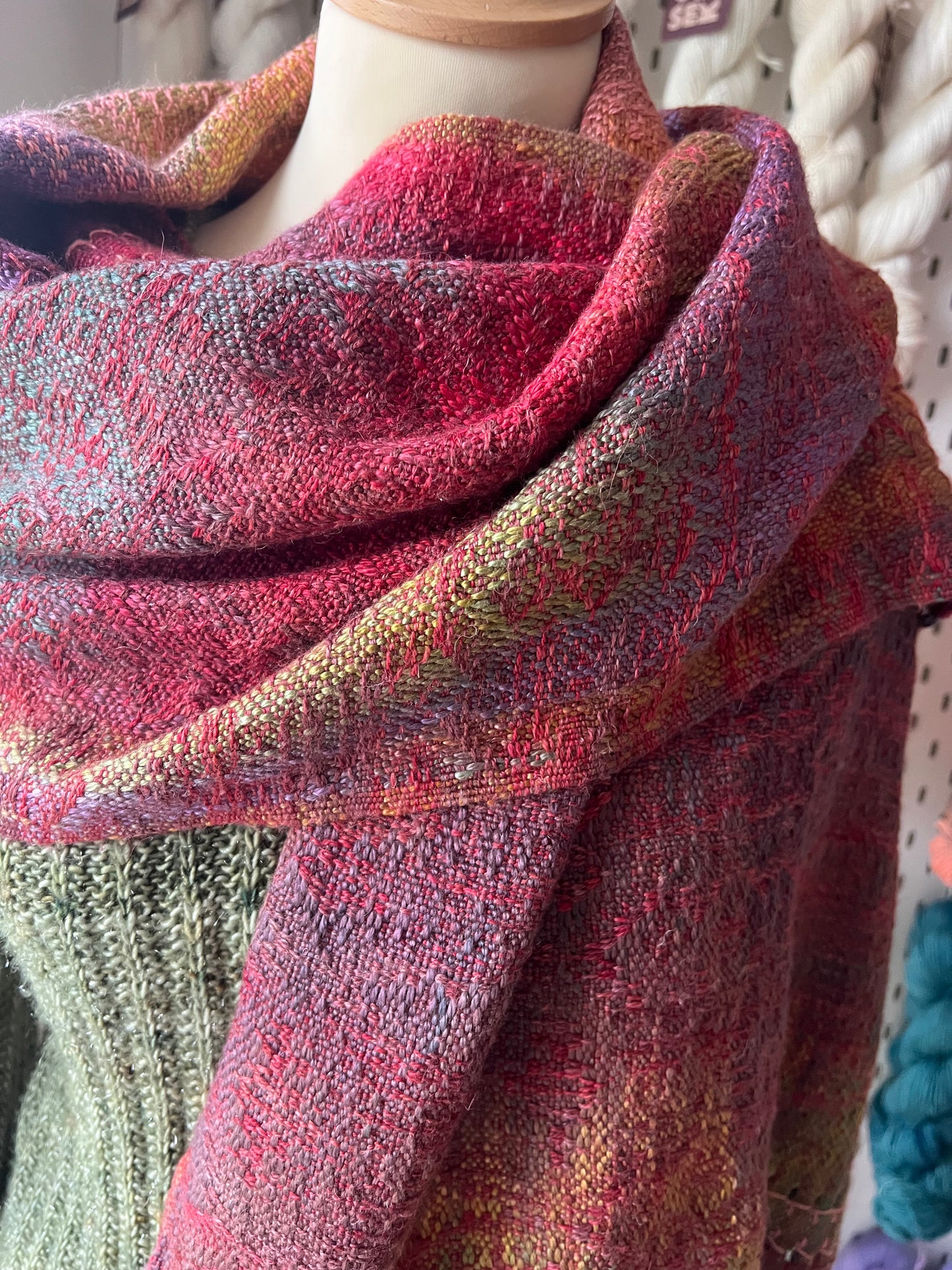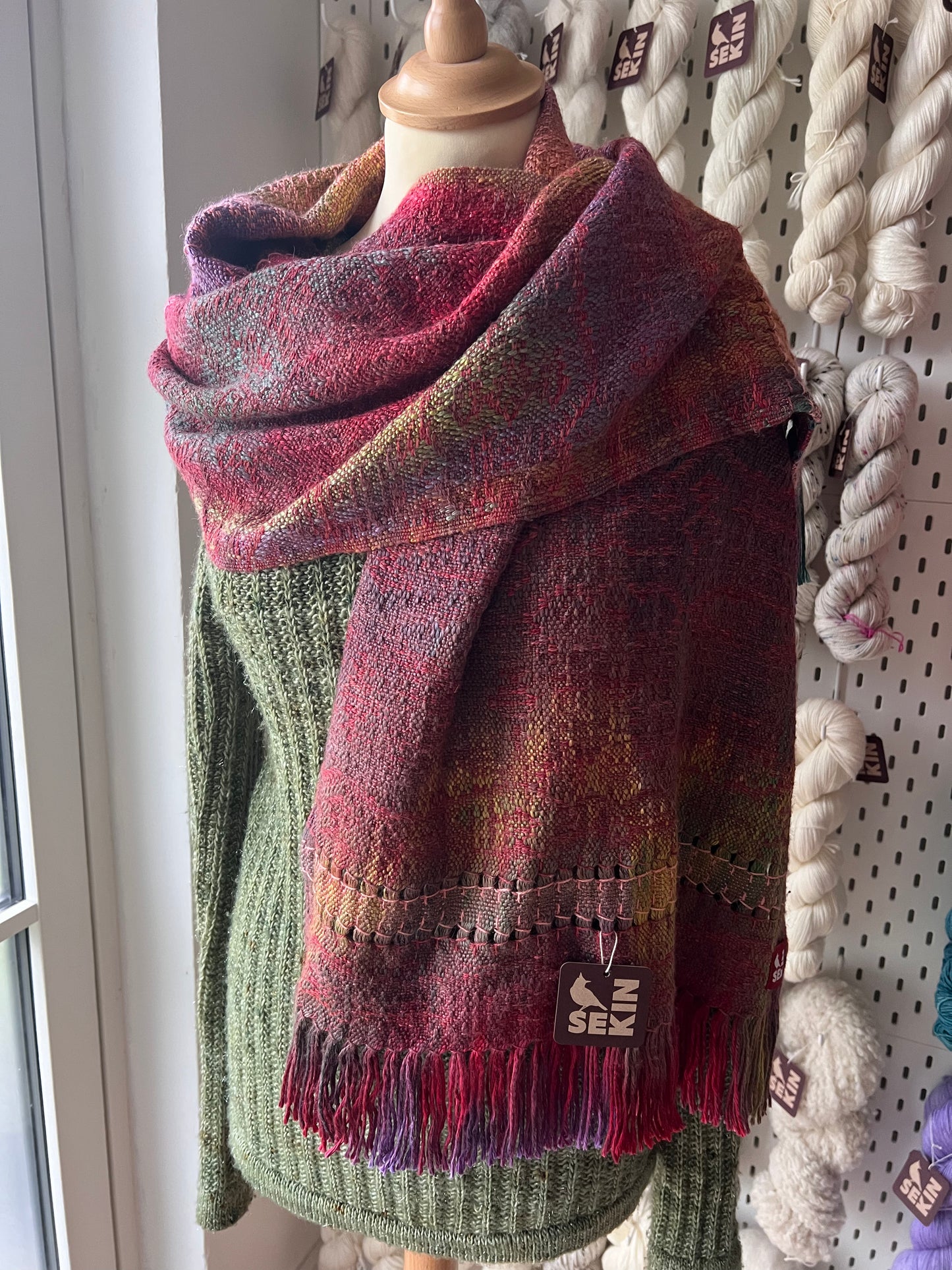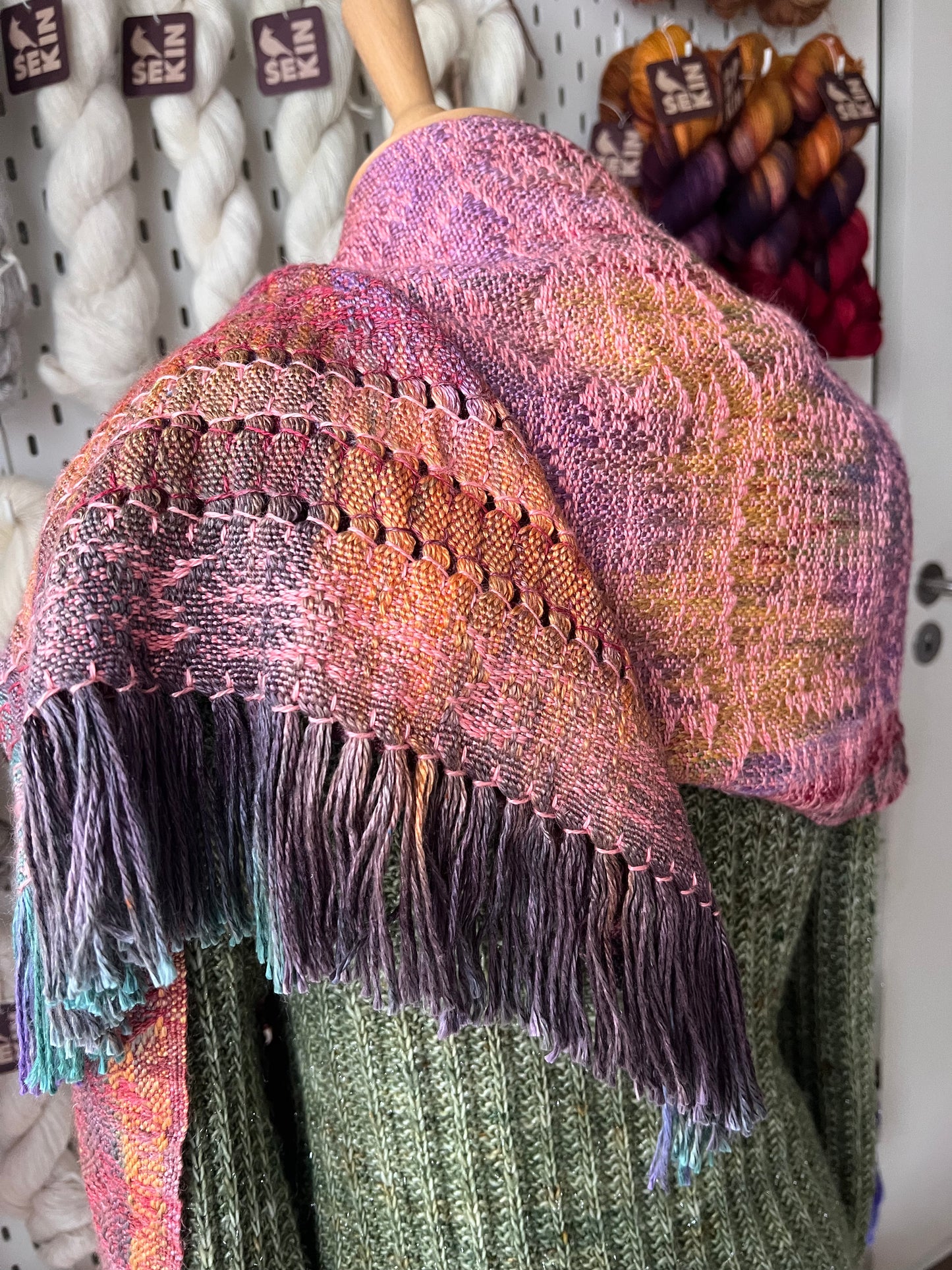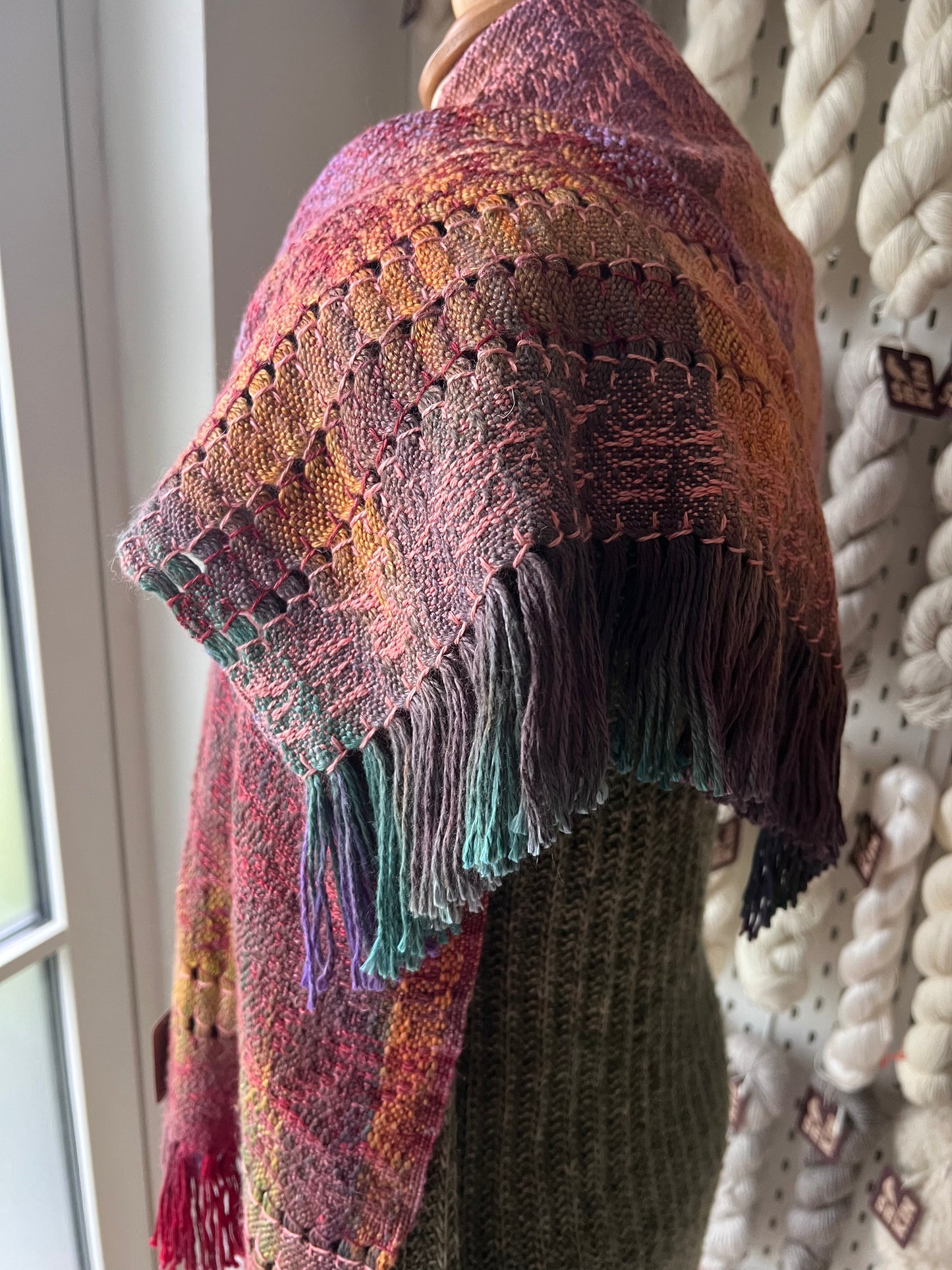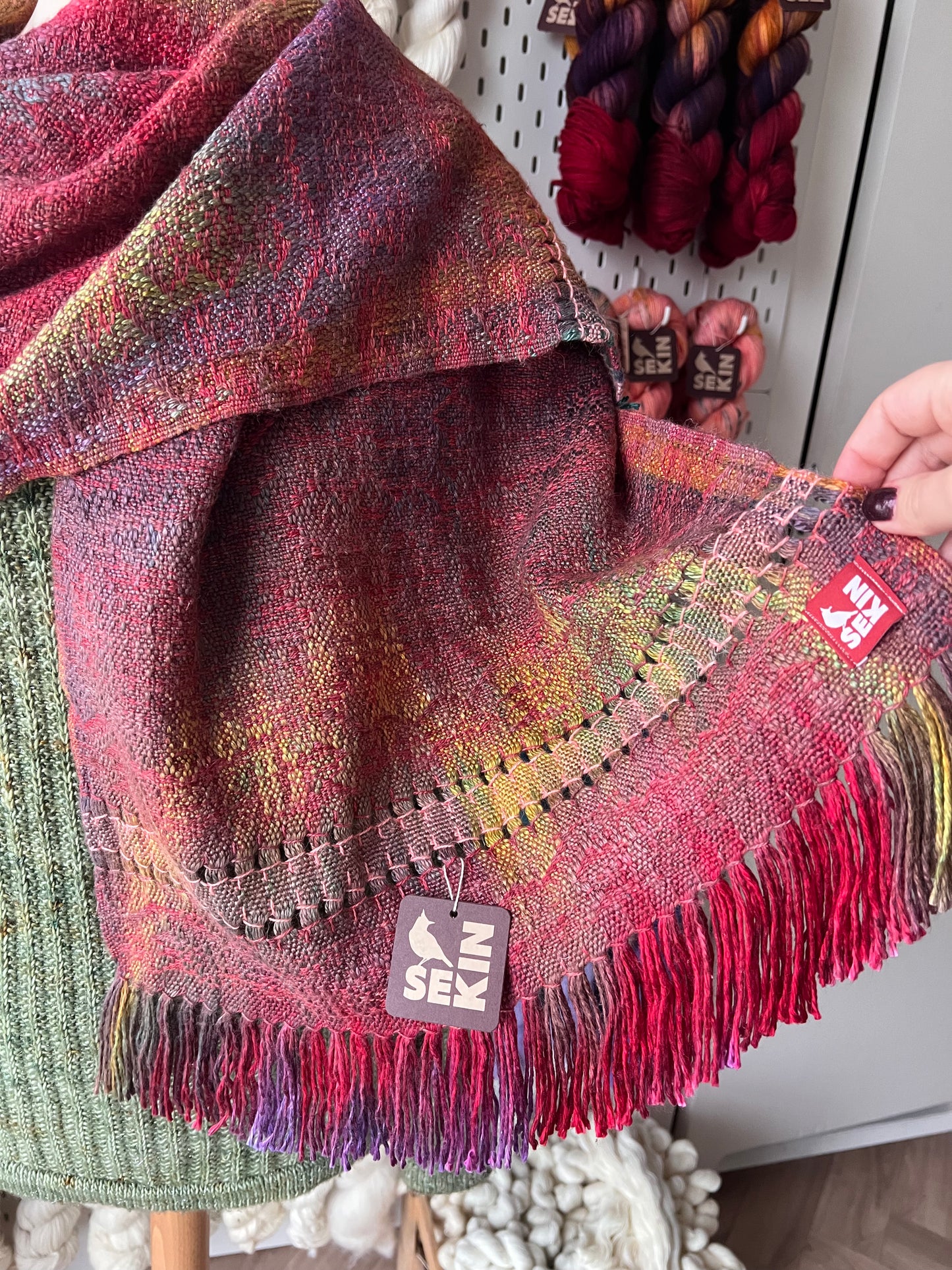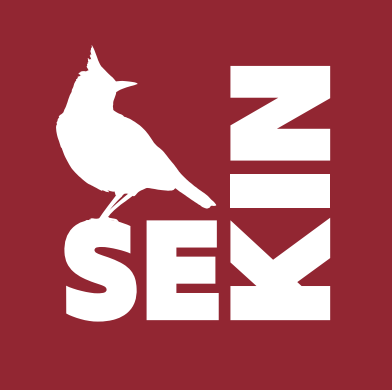Sekin
Sequin Handwoven Scarf “The best time”
Sequin Handwoven Scarf “The best time”
Couldn't load pickup availability
A completely unique handwoven scarf with beautiful details and a beautiful play of colors.
The scarf is handwoven in hand-dyed yarn and it will always be “one of a kind”.
Trend: 100% Mulberry Silk
Weft: 50% Baby Alpaca, 25% Silk, 25% Linen
Length: approx. 160cm + short loose fringes at both ends
Width: approx. 45cm
The process behind the scarf
Yarn and weaving pattern
When I hand weave scarves and other textiles, I start by carefully selecting yarn and weave pattern. The yarn qualities in the warp (the long threads) and weft (the threads across) must compliment each other so that they form a beautiful whole. At the same time, the weave pattern plays a big role in the finished look, both visually and in terms of how the finished woven piece feels - the weave pattern can make it feel compact, but also light and airy. Here I work to find playful weave patterns that create a beautiful visual expression while maintaining a balance in density.
The density of the handwoven textile is also greatly affected by how hard the yarn is beaten together and perhaps you have heard the expression "a mad" or "a happy" weaver, as an expression of whether the yarn is beaten together hard or more gently - and now you may be thinking what type I am.. I am the happy weaver, weaving is like music in my head, a rhythm and a game.
Cutting trend
Once the yarn qualities and weave pattern have been selected, it's time to go to "calculus school" - a little math is needed to get the weave pattern, length, width and density to match each other. AND then it's time for the real work, where I often start by cutting the trend before I dye the yarn - you can read about why further down. Cutting the trend means that the yarn is measured on either a trend table or a trend frame, where all the threads will lie neatly next to each other and with an even thread tension. The thread is passed back and forth/up and down the desired length until there are enough threads to form the width that the hand-woven textile should have. I often weave with 6-8 threads per cm, so for example a scarf with a width of 45 cm will require 270-360 threads to be passed back and forth. BUT I love having every single cm of the yarn between my fingers and feeling the yarn's structure all the way.
Trend and weave coloring
As I mentioned in the previous section, I often cut the trend before I color it and I do this to be able to create the beautiful colors that flow into each other and form a whole, as well as a nice play of colors across the entire width and length of the trend.
Dyeing trend in this way can be both space and time-consuming - in the summer it can fortunately be done outdoors and I often have set aside a whole day to apply the color. The dyeing itself is done by first soaking the trend yarn, then I roll the long trend, calmly over a couple of folding tables, where I can distribute the water-dissolved color over the yarn. If the trend is too long to be rolled out on the tables, it is rolled up a little at one end while it is rolled out a little at the other, as the colors are applied. Depending on whether the trend is in animal or plant fibers, it must either be heated or allowed to rest for the color to soak in and bind.
Wefts are also hand-dyed, but it is in yarn fat which is a little more manageable and the dyeing technique I use on the weft yarn varies depending on the desired finished look. After dyeing, the yarn must be rinsed and dried - when dyeing animal fibers there is no excess dye in the water, so the water can be reused for multiple dyeings.
Preparation for weaving
When the trend yarn is dry, the loom must be bollarded, i.e. the yarn must be rolled up onto the “roller” at the back of the loom. It is important to give yourself time for this part of the process, so that all threads lie evenly and with the same thread tension all the way across the width and length of the trend. Have you ever seen a picture of a loom where there are a lot of water bottles or similar hanging from the threads at the back? If the bollarding is not done carefully, it can become a bit of a puzzle later in the weaving process and even if you are very careful, it can still be a bit of a hassle, but it is part of the weaving.
After the trend yarn is wound, it must be drawn - a funny word, but an important part of the work if the handwoven textile is to have a beautiful pattern. In order not to make this section too technical, I will just briefly mention that this part of the process, together with the tying up of the loom, is crucial for the weaving pattern to be correct, but it is a nice little chore.
The weaving
Now the actual weaving begins, where the weft thread is woven into the trend threads. I love to challenge this part of the process by doing stitching, embroidery, weaving different threads so that they intertwine, weaving in Artyarn and everything else. This is where thoughts, ideas and play are allowed to run free and create the completely unique textiles.
After the weaving
The final finishing touch comes after the weaving, when I have cut the handwoven textile from the loom. Here, any fringes need to be given a final makeover, either by cutting them to the same length or twisting them. The handwoven textile also needs to be given a loving bath, so that all the threads settle - this is especially important when weaving wraps to wear for babies/children, as the threads are then less likely to “shift”.
Shipping & Returns
Shipping & Returns
We offer free shipping to the GLS package shop on all purchases over DKK 1000 in Denmark. Your package is sent as insured parcel post through GLS. We usually ship within 1-2 business days. You will receive a track & trace number as soon as the item is dispatched.
If you opt for hand dyeing for your yarn product, your order will be dispatched within 14 days.
GLS package shop – DKK 39
GLS business – DKK 70
GLS private delivery - DKK 70
Collection at our studio in Grenaa - Free
Foreign shipments are subject to freight depending on the destination country and will be charged separately.
Care Instructions
Care Instructions
Hand wash and dry flat.
